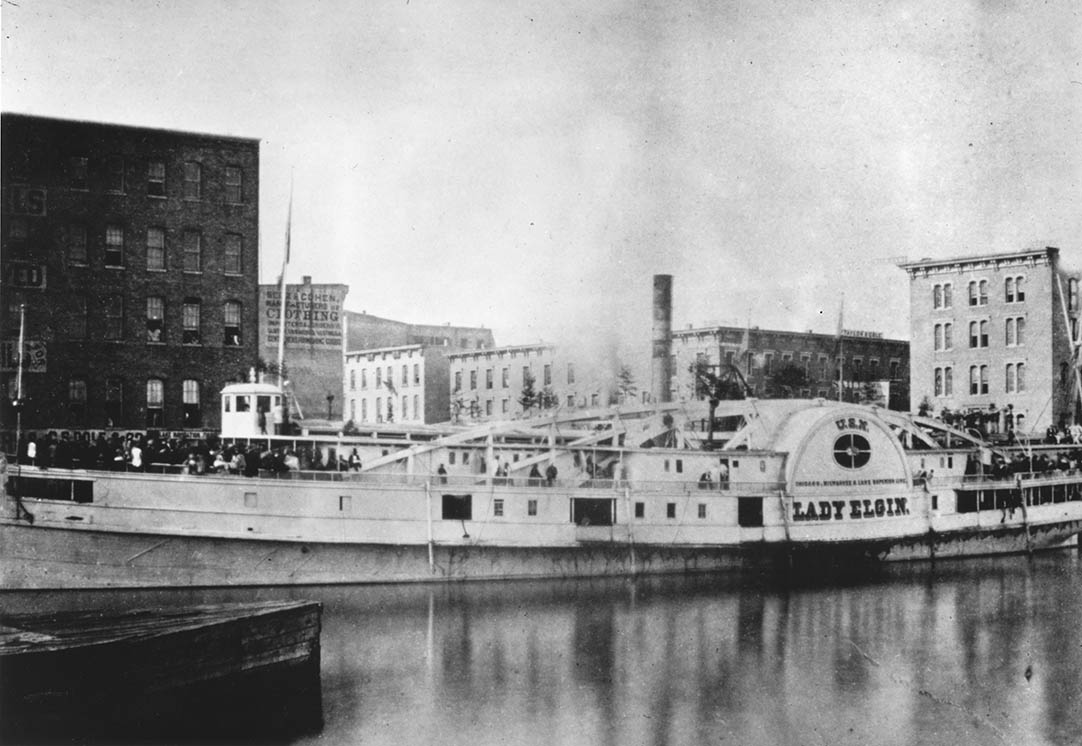Brief History
By Donald J. Terras
 For centuries the geographic feature that came to be known as Grosse Point (Great Point) was home to
Native Americans who opened trade routes with early European explorers along the Lake Michigan shoreline
to the Chicago River. In 1673 the French cartographer,
Louis Jolliet
and his companion,
Father Jacques Marquette, a Jesuit missionary, mapped the area. Jolliet had recognized the strategic importance of the Chicago River at Lake Michigan and he was the first
to envision an inland transportation network connecting America's East Coast through the Great Lakes to the
Mississippi River and south to the Gulf of Mexico. With construction of the Erie Canal in 1824 and the
Illinois and Michigan Canal in 1848, his vision became a reality. As lake traffic increased, so did the size and importance of Chicago. During
the late 1800s Chicago many times had more arrivals and departures in a typical eight-month shipping season
than did the year-round ocean ports of New York City and San Francisco. Grosse Point Lighthouse was built by
the United States Government in 1873 as the lead navigational aid marking the approach to Chicago's harbor.
For centuries the geographic feature that came to be known as Grosse Point (Great Point) was home to
Native Americans who opened trade routes with early European explorers along the Lake Michigan shoreline
to the Chicago River. In 1673 the French cartographer,
Louis Jolliet
and his companion,
Father Jacques Marquette, a Jesuit missionary, mapped the area. Jolliet had recognized the strategic importance of the Chicago River at Lake Michigan and he was the first
to envision an inland transportation network connecting America's East Coast through the Great Lakes to the
Mississippi River and south to the Gulf of Mexico. With construction of the Erie Canal in 1824 and the
Illinois and Michigan Canal in 1848, his vision became a reality. As lake traffic increased, so did the size and importance of Chicago. During
the late 1800s Chicago many times had more arrivals and departures in a typical eight-month shipping season
than did the year-round ocean ports of New York City and San Francisco. Grosse Point Lighthouse was built by
the United States Government in 1873 as the lead navigational aid marking the approach to Chicago's harbor.
 Mariners had to be careful when following the shoreline into Chicago's harbor as there were shallow water
areas (shoals) off Grosse Point responsible for sinking or stranding vessels. The greatest tragedy to occur
in these waters took place in the early morning hours of September 8, 1860 when the passenger steamer
Lady Elgin
collided with the lumber-carrying schooner, Augusta. A definite accounting of all who died in this disaster
was not possible but estimates today are close to 400-people. The citizens of Evanston petitioned Congress
for a lighthouse on Grosse Point but the Civil War delayed the project. Then, in 1871, Congress formally
authorized construction of a lighthouse on Grosse Point.
Mariners had to be careful when following the shoreline into Chicago's harbor as there were shallow water
areas (shoals) off Grosse Point responsible for sinking or stranding vessels. The greatest tragedy to occur
in these waters took place in the early morning hours of September 8, 1860 when the passenger steamer
Lady Elgin
collided with the lumber-carrying schooner, Augusta. A definite accounting of all who died in this disaster
was not possible but estimates today are close to 400-people. The citizens of Evanston petitioned Congress
for a lighthouse on Grosse Point but the Civil War delayed the project. Then, in 1871, Congress formally
authorized construction of a lighthouse on Grosse Point.
The project actually began in 1872 under supervision of lighthouse engineer and Civil War hero, Orlando Metcalfe Poe. By late summer of 1873 the lighthouse buildings had been completed but it was not until March 1, 1874 that Grosse Point Lighthouse sent its welcome beacon of light over the waters of Lake Michigan for the first time. As constructed, the light station was comprised of a keepers' quarters with above ground passageway leading to a fuel supply facility and the light tower. The tower stands 113-feet tall and was originally constructed of brick, metal, and glass. The exterior brick began to deteriorate, however, and in 1914 a facing of concrete was layered over the brick. The illuminating optic at the top of the tower is a second-order Fresnel lens, the largest type used on the Great Lakes and one of only five ever installed in lighthouses there. The beam of light from this optic could be seen up to 20 miles over the lake in good atmospheric conditions and it served both to warn ships of shallow waters around the point and to guide the way into the Port of Chicago. Two fog signal buildings were added to the site in 1880 and a separate fuel supply facility was built in 1900. At its peak of operation Grosse Point Lighthouse required a principle keeper and two secondary keepers, and day laborer, for maintenance and to keep the light and fog signals in top condition. In 1923, the lighthouse was electrified and in 1934 a photoelectric device was installed that turned the light on and off. It was the first of its kind used to activate a lighthouse and soon after the station was decommissioned (not staffed). In 1935, the lighthouse site became the responsibility of the Lighthouse Park District. Today, the light continues to operate as a private aid to navigation.


